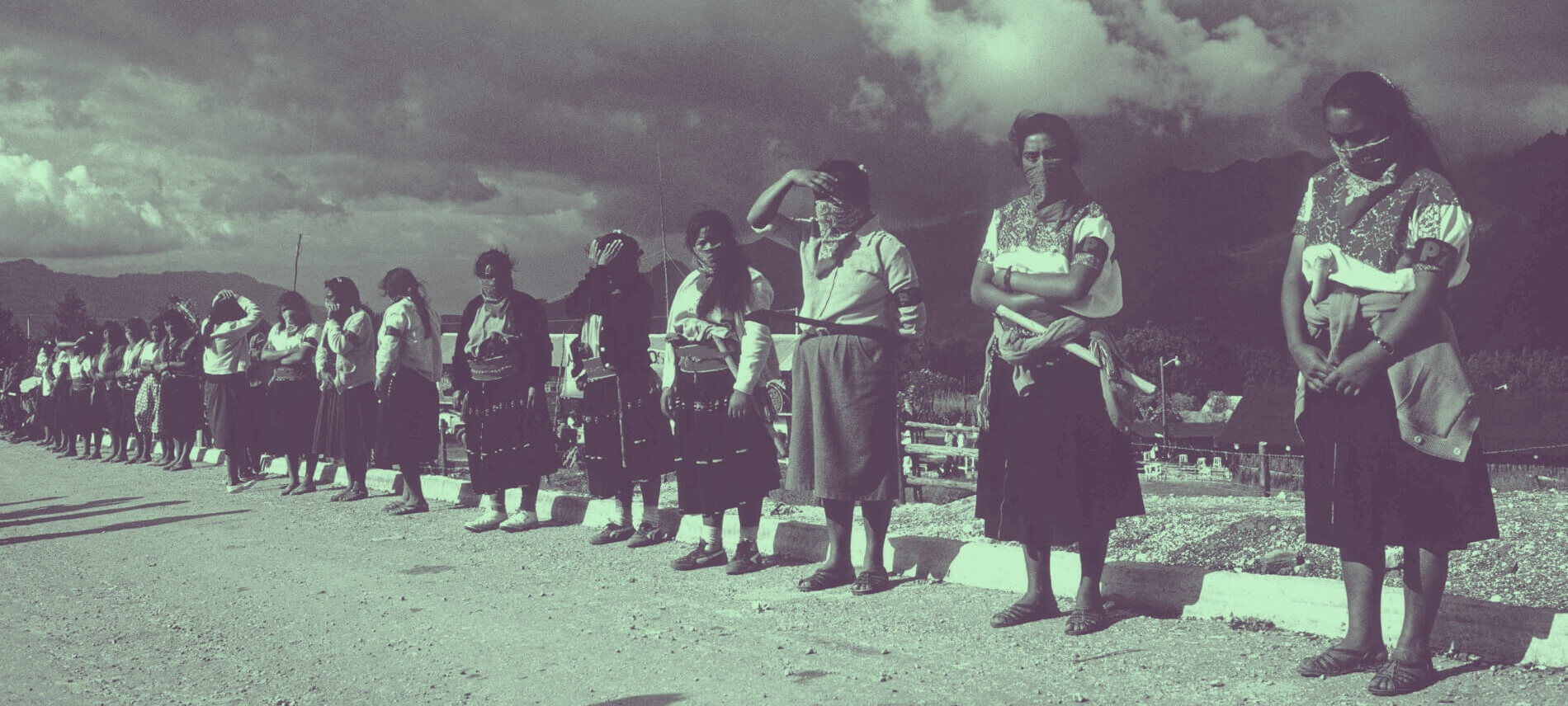
The Indigenous Rights Report is a weekly crash course on everything in the indigenous world.
Make this podcast happen! Support us on Patreon!
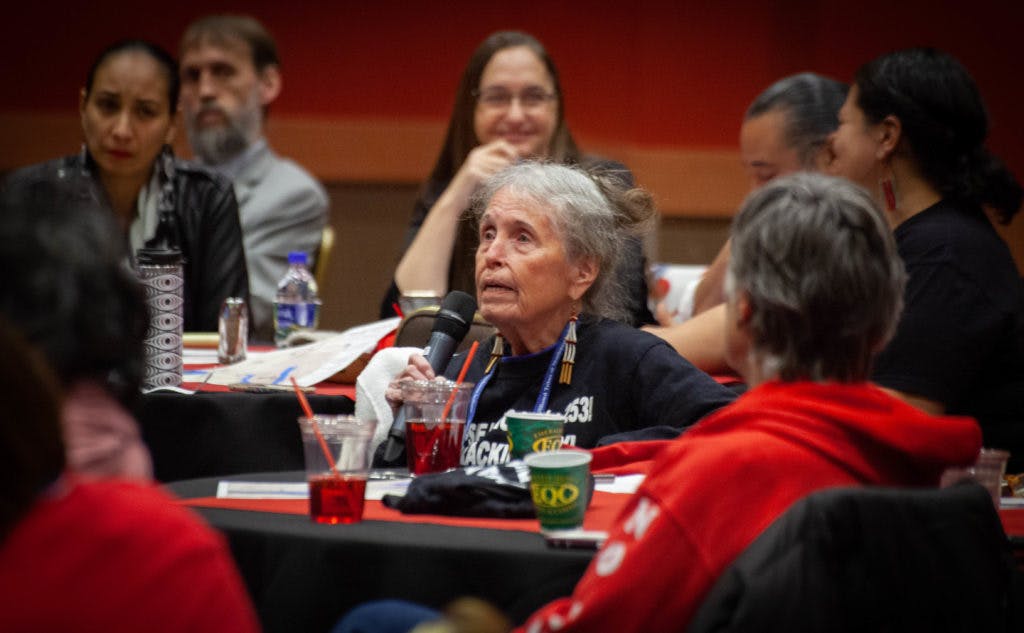
This is the Indigenous Rights Report for the week of November 16. In this week’s report:
- Indigenous blood samples return to Galiwin’ku after 50 years in medical storage
- Brazil prosecutors push soy, cattle Moratorium to protect the Natives
- US settlement announcement prompts Israeli calls for takeover of occupied West Bank
- Children in Amazonas to have Indigenous food for school meals
- Canadian government funds Indigenous protected area project on Ontario Crown land
- ‘Atmosphere of war’ pushes hotel to give Indigenous land back to Brazil tribe, cancel construction
- Puyallup Tribe says LNG project is too dangerous
- African Union urges Britain to cede Chagos Islands, end “colonial” rule
- Largest tribal organization in the US calls on federal government to protect wild salmon
- Tribes halt major copper mine on ancestral lands in Arizona
- Indigenous-wildlife ranger collaboration conserves rare Australian rainforests
- Group claiming to be Native Americans charged with terrorism after attempted armed takeover of housing community
- U.S. Attorney General William Barr announces the Missing and Murdered Indigenous Persons Initiative
- Tribal leaders, federal government looking to ensure tribes accurately counted in upcoming census
- Amazon tribe demands Bolsonaro stop mining on reservations, hydro dams
- Industrial Wind project violates Indigenous rights
- Federal Court sides with Ottawa in decision to reduce Nunavik polar bear hunt
- Native American tribal identity could be included on D.C. birth certificates under new bill
- San Francisco to create American Indian Cultural District
- Disney signed a contract agreeing to respectfully depict Indigenous people in “Frozen II”
- Native American shield returned to New Mexico from France
- Philippines to host international conference on Indigenous peoples
- Mayan activist speaks on struggle for collective intellectual property rights for Indigenous Guatemalans
The Australian National University is finally returning over 200 blood samples to the Galiwin’ku community of Elcho Island in East Arnhem Land. For the past 50 years the National Centre for Indigenous Genomics (NCIG) have been ‘custodians’ of the blood collection, as part of a wider Indigenous genome bank. The blood (or ‘manggu’, in the local Yolngu language) was collected after a typhoid outbreak on Galiwin’ku in 1968 and 1969. Chairperson of Yalu, and Yolngu man, Ross Mandi Wunungmurra, says most descendants were unaware of the study. Now, the blood samples of those who have passed away will be repatriated in a special burial ceremony, and commemorated at a formal memorial site.
Galiwin’ku, also known as Elcho Island, is located off the coast of Arnhem Land, Northern Territory, with a population of just over 2,200. According to the 2016 census, 94% of inhabitants are Aboriginal and Torres Strait Islander with many of those belonging to the Yolngu people. In Yolngu culture, it is very important that once a person has died, their body (and spirit) returns to the land from where it came.
Prosecutors in Brazil say they are pushing major grains traders and meatpackers to stop buying from farmers and ranchers charged with crimes against natives. Federal prosecutors have proposed the ban to agribusiness groups in the form of a “voluntary protocol,” focusing initially on the troubled southern cone of Mato Grosso do Sul, a state that produces about a tenth of Brazil’s beef and soy. While the farm industry has questioned the reasoning behind a ban, one source said prosecutors have pointed to rising pressure in Brazil’s export markets. A 2016 European Parliament resolution, for example, urged Brazil to protect Indigenous rights and cited threats to tribes in Mato Grosso do Sul.
Concerns about Brazil’s environmental and human rights record are rising this year along with deforestation of the Amazon rainforest and invasion of tribal lands under new right-wing President Jair Bolsonaro. That has fed resistance to a new European Union trade deal with South America’s Mercosur bloc.
Washington’s announcement that it no longer considers Jewish settlements in the occupied West Bank illegal has elicited a wave of euphoria from Israeli rightwing figures and indignation from Palestinians. Senior Israeli officials and settler groups said the shift in US policy meant the time was ripe for Israel to take permanent control of the settlements – a move that is largely seen as an end to Palestinian aspirations of statehood. The European Union’s foreign policy chief and Jordan’s foreign minister criticized the U.S. move, while a Palestinian official called it “horrific”.
Hundreds of thousands of Jewish settlers live in outposts in the West Bank, which Israel’s military captured in a 1967 war. Since then, the Israeli military has dominated the lives of more than 2.5 million Palestinians.
26 Indigenous Sateré-Mawé producers signed an agreement with the Attorney General’s Office of the Federal Public Prosecutor’s Office in Amazonas to supply their good, clean and fair products to Indigenous municipal schools in Amazonas. The agreement will remain in place for one year and is worth approximately R$103,000 (approx. $26,000), and around 50 Indigenous municipal schools in Maués, with around 2,000 pupils, will benefit.
The process was driven by the Slow Food movement in partnership with the Federal Institute of Education, Science and Technology of Amazonas (IFAM), together with local stakeholders and with the support of a project financed by the International Fund For Agricultural Development (IFAD) to empower Indigenous young people to defend and promote their cultural heritage. The project has been operational for two years in the Andirá Marau Indigenous Territory of the Sateré Mawé people, in the municipality of Maués, Amazonas.
Ontario’s response to a First Nation’s-led initiative to establish a large protected area in the remote north remains uncertain, as it appears to have had little involvement in the plan. Kitchenuhmaykoosib Inninuwug wants to oversee a proposed 1.3 million-hectare Indigenous Protected and Conserved Area in its traditional territory. K.I. Chief Donny Morris said “for some reason, Ontario is not making an effort to come to our table to start discussions on how we envision the north should look like.” Morris said Kitchenuhmaykoosib Inninuwug’s plan includes implementing rules and policies on “how we’re going to run this protected area.”
The federal government earlier this year committed $300,000 to the project from the Canada Nature Fund’s Target 1 Challenge.
Tupinambá de Olivença has been fighting for 15 years to preserve the land they use to gather food. Last week, their struggle took a big step forward when public pressure finally made Portuguese hotel group Vila Gale cancel plans to build a 500-room luxury resort on the Bahia coast. The Indigenous tribe has been fighting for the land to be designated as a reserve since 2003. Brazil National Human Rights Council has urged the Bolsonaro government to speed up the final demarcation of the Tupinambá land, which is located in the coastal Atlantic forest in southern Bahia.
Brazil’s President Jair Bolsonaro has not yet made a decision on the specific case of the Tupinambá but stated on multiple occasions that he does not intend to sign off any more territory for Indigenous peoples, saying earlier this year there is “too much land for too few Indigenous people.”
The Puyallup Tribe of Indians is fighting against Puget Sound Energy’s proposed Tacoma Liquid Natural Gas plant at the Port of Tacoma. The tribe has received support for its fight from 19 tribes, the NW affiliated tribes, the National Congress of American Indians, the Seattle City Council and 18 organizations.

Former Puyallup Tribal chairwoman Ramona Bennett said people need to pay attention to the environmental impacts of the proposed Liquid Natural Gas plant.
Puget Sound Energy officials say the plant will bring jobs to the area, improve local air quality and reduce the chance of oil spill in the Puget Sound. However, opponents, including the Puyallup Tribe, say the project is dangerous to Puget Sound’s waterways and surrounding neighborhoods, is taking place without adequate tribal consultation, and that its environment impacts ultimately threaten treaty rights.
The African Union called on Britain to withdraw from the Chagos Islands and end its “continued colonial administration” there after a U.N. deadline for it to do so expired. The Chagos Islands belong to the Indian Ocean island nation of Mauritius, according to an advisory opinion from the top United Nations court issued in February. The U.N. General Assembly voted in May in favor of Britain returning the islands to Mauritius and set a deadline for November 22. The African Union urged Britain to comply with the U.N. resolution and reiterated the African Union’s support “for a complete decolonization” of the Chagos Islands.
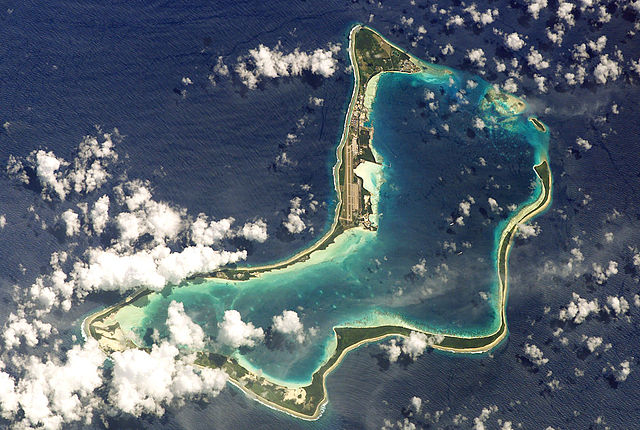
Diego Garcia Atoll, Chagos Archipelago. Photo: Image Science & Analysis Laboratory, NASA Johnson Space Center
Britain does not recognize Mauritius’ sovereignty claim.
The largest organization of Tribes in America condemned the federal government’s permitting process for the Pebble Mine, highlighting the government’s failure to uphold its trust responsibilities to Bristol Bay tribes. The resolution opposes mineral development that would impact traditional fish and wildlife without the consent of the affected tribes.
For the past two years, Bristol Bay’s Tribes have fought for their voices to be heard in the federal environmental review process.
A judge ruled in favor of the Tohono O’odham, the Hopi and Pascua Yaqui tribes in the Santa Rita Mountains of Arizona, for halting Hudbay Minerals’ mine and directing the Forest Service to protect these public lands from the devastating impacts of the mine. Mining corporation Hudbay Minerals proposed to dig a mile-wide open-pit copper mine in the Santa Ritas, burying dozens of sites sacred to the tribes under 1.8 billion tons of toxic waste. The mine’s construction would raze ancestral Hohokam burial grounds, a historic Hohokam village and vital mountain springs.
The judge’s ruling could set a precedent among similar mining claims that abuse the Mining Law. By clearly identifying the Forest Service’s obligation to regulate unpatented mining claims, this victory could make it harder for giant mining companies to exploit ancestral lands for Native American tribes and pollute precious ecosystems.
A collaboration between Indigenous ranger groups Yawuru, Nyul Nyul and Bardi Jawi, and ecologists at Environs Kimberley’s Kimberley Nature Project (KNP) is working to conserve a rainforest system in northwestern Australia. They have partnered for over a decade to conserve monsoon vine thickets (MVT) through revegetation and fire management. Due chiefly to this collaboration’s efforts in maintaining, documenting and promoting the importance of these forests, monsoon vine thickets have been granted ‘Nationally Endangered Ecosystem’ status in Australia.
The ranger groups and KNP team are working to be recognized as the “national recovery team” for MVT. If successful, it will be the first Indigenous-led ecosystem national recovery team in Australia, delivering overdue recognition to Traditional Owners as expert land managers for their country and the species contained within it.
A Pike County woman who is engaged in a prolonged dispute claiming ownership of property that belongs to the private Pine Ridge community in the Poconos in the New York state faces terrorism and kidnapping charges after authorities say she recruited six others for an armed plot to kidnap a worker and “take the land back.” After their arrest, Scott and the group members claimed they were Native Americans and that the land belonged to them.
The Pine Ridge community was formed in 1964 for “the purpose of founding and developing a community for vacationers and for year-around residents,” and as a haven for hunters in the Bushkill, Easton and Allentown areas.
U.S. Attorney General William Barr announced the Missing and Murdered Indigenous Persons Initiative, a national plan to increase the federal government’s role in reducing the number of Native Americans who are murdered or reported missing every year. The crisis is not confined to reservations, as more than 70% of Native Americans in the U.S. live in urban areas. The Justice Department’s plan has three elements: the department will spend $1.5 million to hire specialized coordinators in U.S. attorneys’ offices in 11 states to develop protocols for improving law enforcement response to reports of missing or murdered persons; the FBI can be brought in to work on such cases at the request of tribal, state and local law enforcement; the department will also improve its missing-persons data by conducting an in-depth analysis of its databases and data collection practices.
Barr announced the plan after a meeting with tribal leaders and law enforcement officials at the Flathead Reservation in Montana, home of the Confederated Salish and Kootenai Tribes.
With the 2020 census count looming, tribal and government leaders have been working to ensure Indigenous people in Wyoming and other states get counted. Advocates, government and tribal officials are hoping their efforts — from outreach, consultations with tribal leaders and an upcoming advertising campaign to attract local attention — lead to a more accurate Census count in 2020 in Indian Country, a segment of the U.S. that some say has been under-counted in the past. According to the U.S. Census Bureau, American Indians and Alaska Natives living on reservations were under-counted by nearly 5 percent during the 2010 Census. The Census Bureau will for the first time give those who identify as American Indian or Alaska Native the chance to specify what tribe or tribes they identify with or are enrolled in. The Census Bureau will start counting in remote parts of Alaska in January.
Constitutionally mandated to occur every 10 years, the census affects how and where the government spends billions of dollars for services and infrastructure, the number of congressional seats allocated to each state and other public policy.
The Munduruku blamed Brazil’s President Jair Bolsonaro for increased illegal mining on their reservation lands in the Amazon rainforest. They also urged his government not to restart plans to build hydroelectric dams on the Tapajos river that runs through their ancestral lands and is one of the largest clearwater tributaries of the Amazon. Bolsonaro has vowed to assimilate Indigenous peoples into Brazilian society and raise their standard of living by allowing mining and commercial agriculture on their reservations, which most tribal leaders say will kill their cultures.
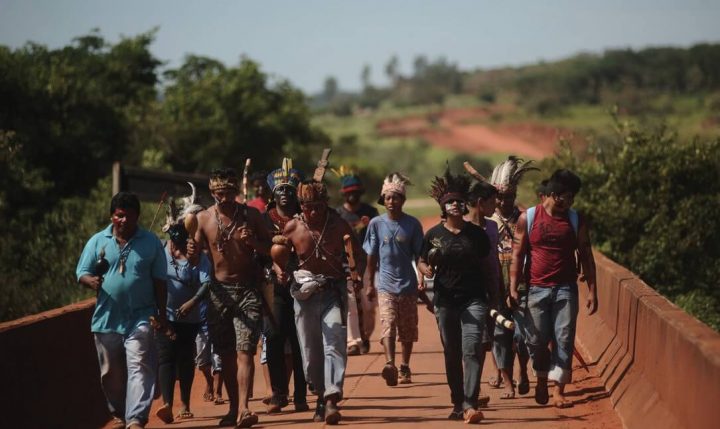
Munduruku march against the Tapajós dam. Photo: Cimi Archive / Ruy Sposati
The Tapajos basin is one of the regions of the Amazon where most illegal mining is occurring, polluting rivers with mercury. Some 13,750 Mundurukus live there in 112 villages.
The Kahuku community has risen up against the Na Pua Makani wind project which has begun construction of eight of the largest turbines in the U.S. in close proximity to residents. One of their biggest reasons is to protect the local populations of wildlife who call the Kahuku skies home. Since October 13, 132 kiaʻi (protectors) have been arrested standing in peaceful nonviolent resistance against the construction of the project opposed by the community for 10 years.
Industrial wind turbines are killing winged creatures considered sacred to the Hawaiians and could be responsible for the possible extinction of entire species. This is an Indigenous rights issue for Native Hawaiians, and other people of Polynesian ancestry and is in violation of articles 29 and 31 of the “UN Declaration on the Rights of Indigenous Peoples” (2007).
A Federal Court judge has sided with Environment Minister Catherine McKenna in a decision she made to reduce the number of polar bears that Nunavik Inuit can hunt, despite claims that she failed to consider traditional knowledge about the health of the bear population. The decision was the culmination of a years-long process, the first of its kind under a modern treaty signed by the Nunavik Inuit and the federal government in 2006, meant to balance Inuit knowledge with scientific evidence.
The case highlights an ongoing source of tension between Inuit hunters and researchers when it comes to polar bear populations. Several Inuit communities have reported an increased number of bear encounters and attacks in recent years, prompting calls to increase hunting quotas. Scientists, however, say that some populations are on the decline, and that the larger number of sightings is because bears are spending more time on land as sea ice dwindles. Nicholas Dodd, a lawyer for the Makivik Corporation (the legal representative of the Nunavik Inuit) said his client is considering an appeal of the decision.
D.C. Councilmember Charles Allen introduced two bills that would grant new rights and privileges to members of Native American tribes, particularly those Indigenous to the D.C. area. One bill would allow people to include their tribal identity on their birth certificate. An increase in enrollment might also lead to a more accurate count in next year’s census, Allen said. The second bill would grant members of the Piscataway Conoy Tribe and the Piscataway Indian Nation free fishing licenses in D.C. in accordance with a 1666 treaty between the Maryland colony and the Piscataway Chiefdom. The treaty guaranteed that the Piscataway would be allowed to fish, hunt, and crab on their ancestral lands.
The proposed bills come on the heels of other recent legislation recognizing native communities, including newly passed laws recognizing November 2019 as D.C.’s first ever Native American Indian Heritage Month and another replacing Columbus Day with Indigenous Peoples’ Day.
On the eve of the 50th anniversary of the occupation of Alcatraz Island, San Francisco Supervisor Hilary Ronen will introduce legislation to form a Native American Cultural District. “Cultural Districts are one of the most important tools we as a city have to proactively strengthen the cultural identities of neighborhoods and communities that face the pressures of gentrification and displacement,” said Supervisor Ronen. “There are few communities in the country that have experienced displacement as violently and as profoundly as American Indian people.”
Long before bearing its modern name, San Francisco was home to 40 different Indigenous tribes. Today, according to 2018 Census estimates, Native Americans make up only 0.3 percent of the city’s population.
Frozen II filmmakers at Disney and the Sámi parliament agreed that the film would hire a group of expert cultural consultants and that Disney would enter into a ceremonial contract with parliament representatives. The document they produced codifies Disney’s “desire to collaborate with the Sámi in an effort to ensure that the content of Frozen II is culturally sensitive, appropriate, and respectful of the Sámi and their culture.”
In exchange for the Sámi parliament’s feedback, Disney agreed to release a version of Frozen II dubbed in one Sámi language, and they also agreed to help with learning programs that work with Scandinavian Indigenous communities.
A ceremonial Native American shield has been welcomed back to New Mexico by tribal leaders, in the culmination of a yearslong international campaign to reclaim the sacred object that held a place in a cycle of ceremonies until it vanished from a mesa-top Indigenous village in the 1970s.
Nearly four years ago, the shield surfaced as an auction item in Paris, prompting tribal leaders to begin making public appeals for it to be pulled from bidding and returned to them. That agreement set in motion the process for the shield to return to Acoma Pueblo, where Vallo, the governor, said it will eventually be held at a museum before it’s returned to the Sky City village and re-introduced into ceremonies.
Next month the Philippines will host an international conference that seeks to highlight the knowledge, skills and practices of Indigenous peoples, seeking to empower the culturally distinct societies. The International Conference on Indigenous Knowledge, Systems and Practices seeks to promote a grassroots and research-based approach. In the Philippines, Indigenous communities can be displaced by mining projects and relocated to areas where there is no source of livelihood to match their skills.
Angelina Aspuac, and Indigenous Guatemalan activist and lawyer, spoke at Amherst College about the movement working to secure intellectual property rights for the Maya community in Guatemala and their recent victories in front of both the Guatemalan Supreme Court and the Inter-American Court of Human Rights. Following a petition by a broad coalition of Maya women to recognize their collective intellectual property rights to designs that were their own, in 2016 the Supreme Court of Guatemala ruled in their favor, instructing the legislature to create legislation ensuring the rights of Indigenous weavers to their own designs. Maya leaders began round table discussions with legislators, human rights organizations and government ministers to design a law to be presented in February 2020 that will prevent companies from using artifacts from or images of Mayan people without compensation, and that would create standards of collective intellectual property rights.
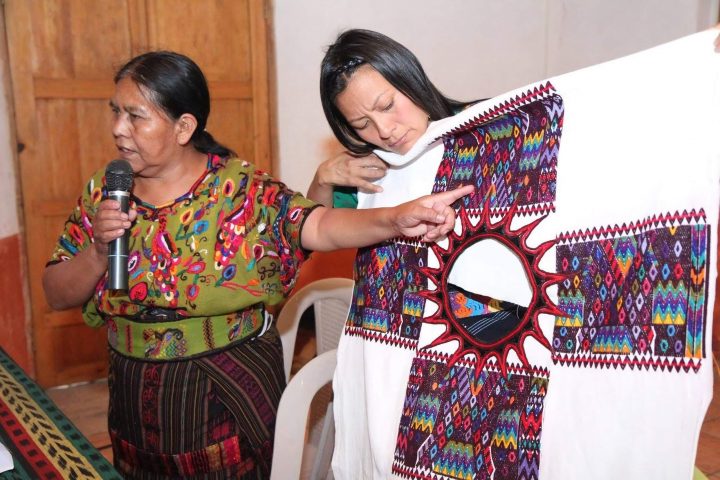
Angelina Aspuac (right) accompanies a weaving workshop in Chichicastenango. Every community has its own design traditions. Maya weavers regularly meet to share knowledge, analyze designs, and systematize the traditional güipiles within and across communities.
Indigenous communities across the country have begun forming councils of weavers who will have full authority to decide how and by who their designs can be used and will have the authority to require proper compensation. Aspuac sees this as just the beginning of a larger struggle for Indigenous rights in Guatemala.
This is the Indigenous Rights Report.

Indigenous Peoples are putting their bodies on the line and it's our responsibility to make sure you know why. That takes time, expertise and resources - and we're up against a constant tide of misinformation and distorted coverage. By supporting IC you're empowering the kind of journalism we need, at the moment we need it most.